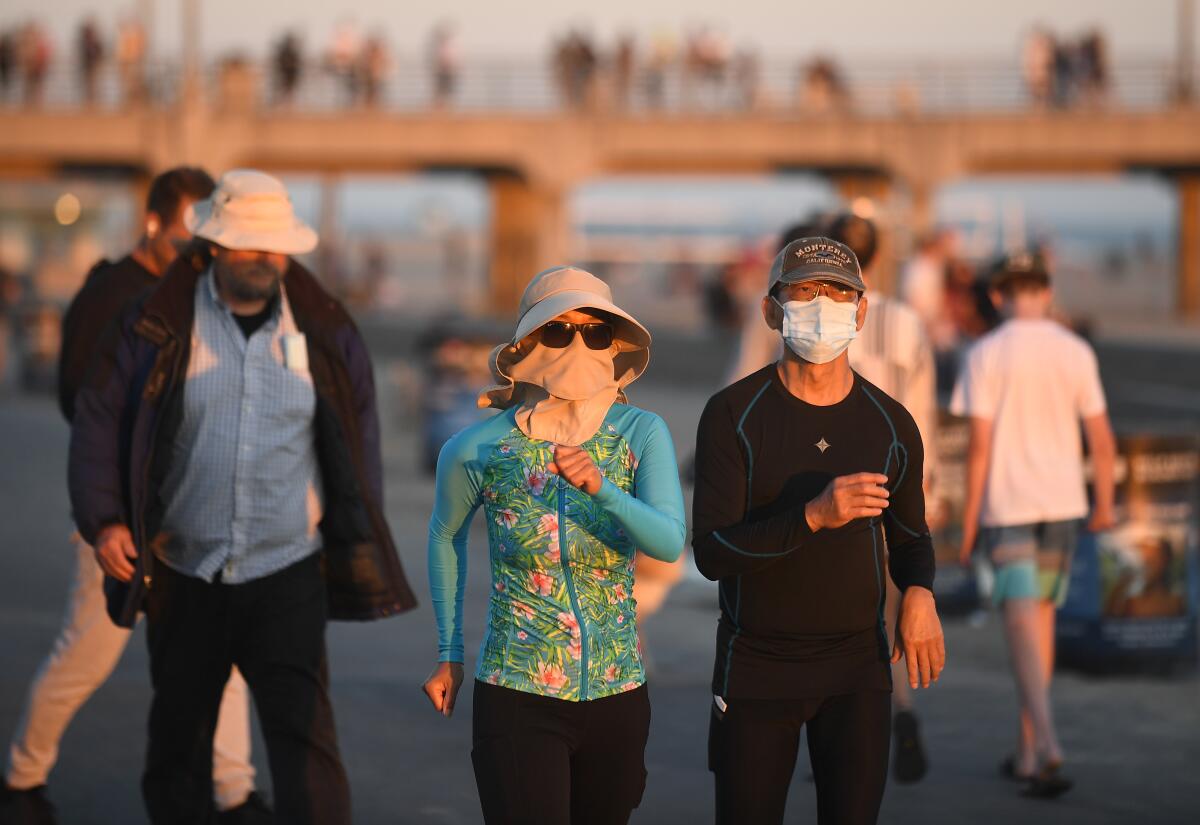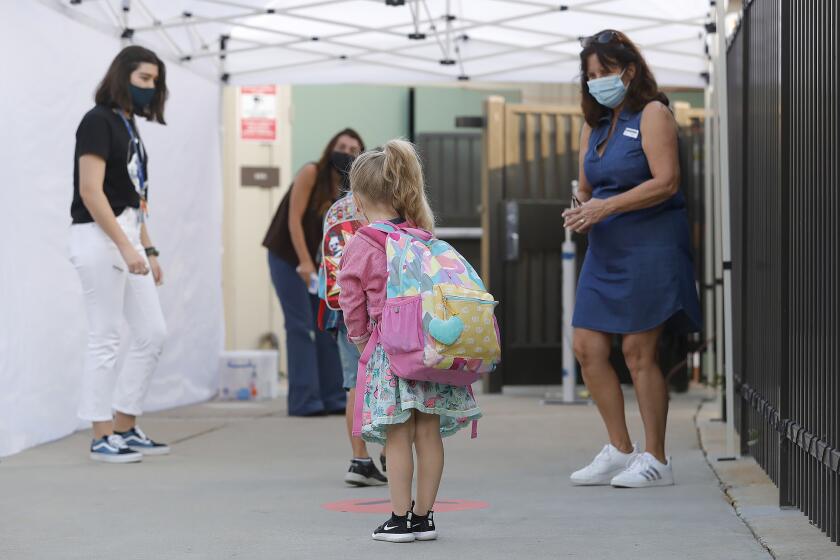With COVID-19 hospitalizations potentially peaking in early September, O.C. health official urges caution

- Share via
As Orange County contends with its third COVID-19 surge, hospitalizations may peak in the first few weeks of September.
Orange County health officials provided updates on the local response to the pandemic during two virtual news conferences this week organized by county Supervisor Katrina Foley.
Dr. Regina Chinsio-Kwong, deputy health officer with the O.C. Health Care Agency, said the county should be peaking about now in terms of cases, which means hospitalizations should peak in the first couple weeks of September due to a weeks-long delay between cases and hospitalizations.
“So we’re not out of the woods yet, and people really need to be very careful in the next coming weeks,” Chinsio-Kwong said.
The county health officer also said the current surge more closely mirrors last year’s summer surge. The summer surge last year peaked at about 700 hospitalizations, while the winter surge had over 2,000 hospitalizations. As of Thursday, there were 571 hospitalizations in Orange County.
“The hope is that we don’t mirror what happened in the winter, and hopefully the vaccinations will dampen the peak of the hospitalization, that’s the goal,” Chinsio-Kwong said.
Orange County saw a steep increase in cases on Wednesday with 1,213 daily reported cases, nearly double the 668 cases posted on Tuesday. Another 572 positive cases were reported Thursday.
Chinsio-Kwong said that the cases in past surges were seen largely in older populations. However, the cases in the current surge are predominately among younger people, who have received fewer vaccinations than the older population. The case rate in children and teens is highest among 15- to 18-year-olds, she said.
The O.C. Health Care Agency is currently tracking the case counts in schools and providing that data online.
“We do have a lot more work to do on the youth in our community in terms of helping to encourage them to get vaccinated, ” Foley said.
Chinsio-Kwong said the case count can vary from day to day, so it’s important to wait a few weeks to see a pattern.
“After tracking this almost on a daily basis through the last year, what we see is it ebbs and flows,” Chinsio-Kwong said. “When you finally see the pattern, then you have to wait and see, is it really a pattern or just the day-to-day ebb and flow.”
Orange County has seen a surge in COVID-19 cases recently, and officials are cautioning residents to be careful in the weeks to come.
Chinsio-Kwong also urged people to wear masks indoors and outdoors to be cautious because the Delta variant has proven to be contagious for both vaccinated and unvaccinated people.
In response to a question from the media regarding an increase in breakthrough cases in the county, Chinsio-Kwong outlined why the vaccine helps strengthen responses to COVID-19 but doesn’t fully fortify the body against the virus.
“What we’re seeing is that people who have been vaccinated have much milder illness because they already have that immune defense internally to immediately fight ... the immune system’s appropriately reacting and you’re not really getting severe illness,” she said.
“Whereas if you have no vaccine, what it will do is you’ll have the virus get into the mucous membranes of your nose, will travel deeper into the bloodstream and your immune system will then really flare up ... But what we know about COVID is ... it’s stealthy and it evades our immune system and so it causes more severe illness.”
She mentioned that the U.S. Food and Drug Administration and Centers for Disease Control and Prevention are recommending a booster shot because there’s a decline in the strength of the vaccine after about eight months.
She said that the administration of the booster will likely be similar to how it is now, in drugstores and pharmacies. The county is not intending to open up its mass vaccination sites again, though it will still have its mobile vaccine units available.
“Because at this point there’s adequate vaccine distributed through many different pharmacies, different hospitals, different clinics,” she said.
“We’re still trying to get more clinics signed up to administer, but we feel that there’s adequate resources to deliver the vaccine throughout all of our different communities.”
All the latest on Orange County from Orange County.
Get our free TimesOC newsletter.
You may occasionally receive promotional content from the Daily Pilot.





